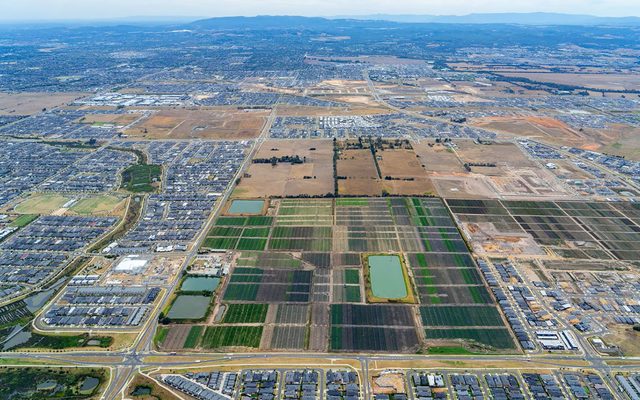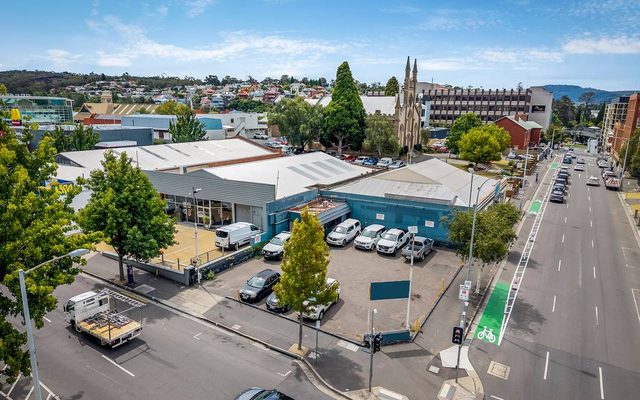This article is from the Australian Property Journal archive
HOUSE prices in four Australian capital cities have surged by 50% on a per sqm of land basis in just five years, but a shift towards greater density and smaller land sizes means prices across the country would be “vastly” higher than they are today, according to Domain.
Domain’s Price Square Metre Report 2024 shows that prices per square metre for both houses and units in capital cities have been trending upward over the past year and five years, driven by higher prices and smaller floor and land sizes.
“While this may seem counterintuitive, it actually creates more opportunities for home ownership. Higher density translates to increased affordability. This stems from a fundamental truth: as the population continues to expand, available land remains finite,” the report said.
Sydney house prices are 49.5% higher per sqm or land than they were in 2019, sitting at $2,590 per sqm for a 563 sqm property. In nearly all instances for houses and units across the capitals, growth has slowed into the past 12 months.
Over five years, Brisbane house prices have jumped by 58.1% per sqm of land to $1,341, Adelaide by 57.1% to $1,296, and Hobart by 59.1% to $1,073.
Melbourne house prices have increased by 32.8% to $1,838 per sqm.
House prices in Canberra have leapt by 48.3% to $1,485, while Perth prices are up 40.1% to $1,410.
Darwin remains the cheapest capital for housing, despite increasing 21.5%, at $712 per sqm for a home with an average 802 sqm land size.
Unit prices per sqm in Sydney ($8,510 per sqm) and Melbourne (7,333 per sqm) have been largely flat over five years. Large gains have been seen in Hobart (46.7% to $6,200), Canberra (39.5% to $6,754), Adelaide (7.9% to $5,515) and Brisbane (34.0% to $5,597).
More dwellings needed
Domain’s chief of research and economics, Nicola Powell, said that despite Australia having some of the world’s least densely populated cities and most expensive property markets, the desire of people to live in the capital cities has meant that more are trying to squeeze into them and are competing for housing.
“This housing demand needs to be countered with the growth of dwellings to slow the overall growth in home prices.
“The decline in land size is due to the increased urban density. While it might seem surprising, this shift is essential for preserving and improving housing affordability for the broader population.”
According to Domain data, without the shift towards greater density and smaller land sizes over the past two decades, house prices would be “vastly” higher than they are today – they would be 44.4% higher in Perth, 16.2% in Adelaide, and 13.9% in Melbourne. The figures are more modest in the other capitals – Brisbane house prices would be 7.3% higher, Hobart 6.0%, Sydney 5.5%, Darwin 2.9% and Canberra 2.6%.
“Land is finite and we need to ensure it is provided at low cost and utilised efficiently. This will require a well-defined development plan from our government to ensure land-use policies meet housing needs,” Powell said.
Estimates suggest a 10% increase in housing stock lowers prices between 15% and 30%.
“Knowing the price per sqm helps buyers find where the land is cheaper and identify bridesmaid suburbs, but prioritising increasing density from the government will help homeownership become more accessible for Australians,” said Powell.
The NSW government last year announced it would overrule local Council controls on housing planning decisions in low and medium-density areas in a bid to fast-track the delivery of up 112,000 homes across a greater diversity of forms. Among the changes would be less red tape for mid-rise apartment blocks close to transport hubs and town centres.
Earlier this month, Property Council of Australia CEO Mike Zorbas used his address to the National Press Club to attribute the national housing crisis partly to the “rank incompetence of previous government and parliaments” in failing to unlock supply and to anticipate population growth.





